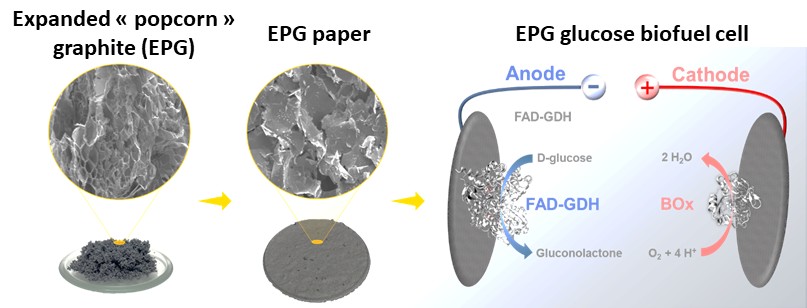DCM
- Share
- Share on Facebook
- Share on X
- Share on LinkedIn

Here, we demonstrate the beneficial use of expanded graphite as an electrode material suitable for enzyme wiring for bioelectrocatalytic energy conversion. Expanded graphite is obtained via microwave treatment using commercial expandable graphite, which leads to a drastic popcorn-like volume increase. After an adjusted dispersion and filtration procedure, enzymatic bioanodes are formed using FAD-glucose dehydrogenase (FAD-GDH) with 9,10 phenanthroline-5,6-dione (PLQ) as an electron shuttle. For the bioanode, a current density of 2.87 mA cm⁻² is obtained at 100 mmoL-1 glucose concentration at 0.3 V vs Ag/AgCl (sat. KCl). The biocathode provided a current density of -0.41 mA cm⁻² in oxygen saturated buffer solution at 0.2 V. These performances are comparable to lab-made CNT-BPs and commercial CNT-BPs. expanded graphite represents therefore a cost-efficient and non-toxic alternative to expensive and potentially toxic nanomaterials.
Paulo Henrique M. Buzzetti, Anurag Mohanty, Pierre Armand, Andrew J. Gross,Yannig Nedellec, Michael Holzinger
Carbon, 2025, 244, 120691
- Share
- Share on Facebook
- Share on X
- Share on LinkedIn